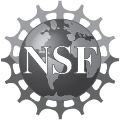Topics
- Waves
- Sines
- Cosines
Description
Learn how to make waves of all different shapes by adding up sines or cosines. Make waves in space and time and measure their wavelengths and periods. See how changing the amplitudes of different harmonics changes the waves. Compare different mathematical expressions for your waves.
Sample Learning Goals
- Explain qualitatively how sines and cosines add up to produce arbitrary periodic functions.
- Recognize that each Fourier component corresponds to a sinusoidal wave with a different wavelength or period.
- Mentally map simple functions between Fourier space and real space.
- Describe sounds in terms of sinusoidal waves.
- Describe the difference between waves in space and waves in time.
- Recognize that wavelength and period do not correspond to specific points on the graph but indicate the length/time between two consecutive troughs, peaks, or any other corresponding points.
- Become comfortable with various mathematical notations for writing Fourier transforms, and relate the mathematics to an intuitive picture of wave forms.
- Determine which aspect of a graph of a wave is described by each of the symbols lambda, T, k, omega, and n.
- Recognize that lambda & T and k & omega are analogous, but not the same.
- Translate an equation from summation notation to extended notation.
- Recognize that the width of a wave packet in position space is inversely related to the width of a wave packet in Fourier space.
- Explain how the Heisenberg Uncertainty principle results from the properties of waves.
- Recognize that the spacing between Fourier components is inversely related to the spacing between wave packets, and that a continuous distribution of fourier components leads to a single wave packet.
Version 3.06










